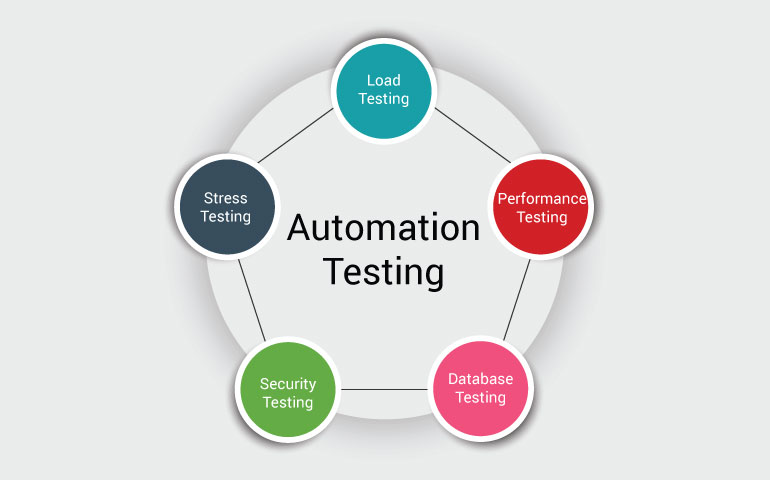The Ultimate Overview to Implementing Automation Testing Successfully
The Ultimate Overview to Implementing Automation Testing Successfully
Blog Article
From Handbook to Automated Testing: A Comprehensive Guide to Transitioning Smoothly and Efficiently
In the world of software application screening, the change from manual to automated procedures has actually ended up being an increasingly essential shift for organizations looking for to improve performance and accuracy in their screening methods. The journey from guidebook to automated testing is not without its obstacles, however when approached purposefully and with a clear plan in mind, the advantages can be significant.
Benefits of Automated Examining
Automated screening offers various advantages, enhancing effectiveness and precision in software program growth processes. Automated examinations can be run simultaneously on multiple devices and operating systems, substantially speeding up the testing phase contrasted to manual screening.
In addition, automated screening makes sure a higher degree of precision in discovering defects. Uniformity in testing is also boosted, as automated tests execute the very same steps precisely each time they are run.
Picking the Right Tools

To start with, assess your goals and demands. Comprehend the scope of your task, the technologies entailed, and the ability collection of your team. This analysis will assist you identify the features and capacities you need in your testing tools.
Second of all, take into consideration the compatibility of the devices with your existing processes and systems. Smooth combination with your current software growth lifecycle is vital to make sure a smooth shift to automation.
Additionally, review the scalability and versatility of the tools. As your screening needs evolve, the devices ought to be able to adjust and suit changes properly.
Finally, factor in the support and area around the devices. When carrying out automated testing, durable assistance and an energetic individual area can offer beneficial resources and help. By carefully taking into consideration these elements, you can select the right devices that line up with your requirements and established the stage for a successful shift to automated testing.
Composing Reliable Test Scripts

When crafting test manuscripts, it is vital to consider the specific needs of the software program being checked and make sure that the scripts address all critical functionalities. Clear and detailed naming conventions for examination manuscripts and test situations can boost readability and maintainability. Furthermore, incorporating mistake handling systems within the test manuscripts can assist in identifying and addressing concerns promptly.
Moreover, arranging test scripts right into modular parts can improve reusability and scalability, decreasing redundancy and boosting efficiency in test script upkeep. Normal reviews and updates to evaluate manuscripts are critical to keep pace with progressing software program needs and functionalities. By complying with these concepts, testers can develop durable and reliable test scripts that contribute dramatically to the success of automated screening procedures.
Integrating Automation Into Workflows
Efficient go to the website integration of automation tools into existing operations enhances and improves processes productivity within software application advancement cycles. When integrating automation into process, it is crucial to determine recurring tasks that can be automated to save time and minimize human mistake. By perfectly incorporating automated screening devices like Selenium or Appium right into the software application growth lifecycle, groups can achieve faster comments on code adjustments, leading to quicker bug discovery and resolution. This assimilation enables continuous testing throughout the development procedure, making sure that any type of concerns are identified at an early stage, causing greater software application high quality. Furthermore, automation can be utilized to set off examinations instantly after each code dedicate, providing prompt recognition and maximizing testers to concentrate on even more complex circumstances. Correct assimilation of automation devices calls for cooperation in between development, screening, and operations teams to develop a unified workflow that maximizes effectiveness and effectiveness in providing premium software program items.
Making Certain a Smooth Shift
Successfully transitioning to automated screening includes meticulous preparation and cautious implementation to lessen disruptions and take full advantage of performance in the software growth procedure - automation testing. To ensure a smooth transition, it is vital to begin by performing a thorough assessment of the current testing procedures and determining areas where automation can bring one of the most substantial advantages. Involving with all stakeholders early on in the procedure, consisting of designers, testers, and job managers, is essential for garnering assistance and buy-in for the automation initiative
Communication is vital during this shift stage. Clear communication of the goals, advantages, and assumptions of automated screening aids to take care of any type of resistance or worries that may develop. In addition, providing appropriate training and sources for employee to upskill in automation tools and methods is essential for guaranteeing a successful change.

Conclusion
To conclude, transitioning from handbook to automated testing uses countless advantages, including increased efficiency and dependability. By choosing the proper devices, writing effective test scripts, and integrating automation perfectly into process, organizations can make sure a smooth and effective change. It is vital to welcome automation as a beneficial property in software program screening procedures to boost total high quality and efficiency.
In the realm of software application testing, the shift from manual to automated procedures has actually come to be a significantly crucial shift for organizations seeking to boost performance and precision in their testing practices. Automated tests can be run all at once on numerous gadgets and operating systems, this page significantly speeding up the testing stage contrasted to manual screening. Uniformity in testing is also boosted, as automated examinations perform the same actions exactly each time they are run.To ensure the effective application of picked testing tools, the creation of efficient test scripts plays a critical duty in verifying the functionality and efficiency of automated processes - automation testing. By adhering to these principles, testers can produce reliable and durable test scripts that add substantially to the success of automated screening processes
Report this page